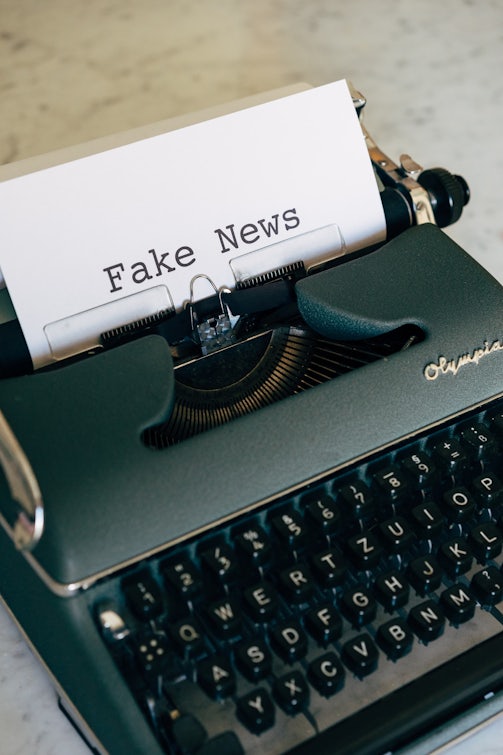While the term ‘fake news’ is one we have all had to become accustomed to in recent years, it’s something that PR professionals are often associated with – causing readers and marketers to become increasingly cynical and question the content they are consuming and accepting.
However, as Oliver Brett, SEO Manager at Screaming Frog and proud owner of the infamous Twitter account @LordOfTheSERPs (give him a follow!) explains, being able to create content that is designed to attract attention and encourage hyperlinks is a tremendous asset for SEOs and digital PRs.
In case you weren’t aware, a strong backlink profile to your website is a surefire way of improving your visibility in SERPs, which in turn increases traffic and ultimately revenue.
But how do you create these stories and content?
Linkbait
Google ‘linkbait’ and you will be greeted with this definition: content designed to attract attention and encourage those viewing it to create hyperlinks to the site, with the aim of improving the site’s position on the list of results returned by a search engine.
When Oliver refers to ‘fake news’ it’s important to note that this doesn’t involve lying to the media – it’s about ‘manipulating reality’! Think about the assets or data you have and think about how or why these could be newsworthy.
Now as digital PR professionals, or SEOs working with a focus on off page, it’s important to remember the basic fundamentals of PR: while links are the holy grail of our ‘linkbuilding’ efforts – putting your clients or brand in front of the press is all about raising the awareness of an organisation, so be sure that any campaigns align with the ethos of the business.
Strategies to creating effective linkbait content:
- Newsjacking – keep an eye out for breaking stories in the press and be responsive enough to jump on a trending or topical hook to get your client noticed. Requires a quick turnaround time to ensure you don’t miss the mark!
- Stunts – utilise offline activity to drive links back to your site. If you were going to nickname a worm-like amphibian after Donald Trump, for example, ensure you have a page or blog post on your site with more information about the campaign to encourage journalists to provide a link.
- ‘Fake news’ – fake or novelty products seemed to Oliver’s favourite in this space. Think about a common problem and create an invention that seems too ridiculous (and is) to be true. One of their best successes was the ‘Privi-pee’ – I don’t think I need to explain the thinking behind that one!

Risk v reward
This type of activity must be considered carefully before going forwards, and for an agency professionals, it’s crucial that you work closely with your client before embarking on a campaign like this.
Big campaigns or stunts could go viral but it could flop – as with any other kind of press outreach – at the same time. However, this time it will require a bigger time investment to give it the best chance of going big!
Linkbait finds a strong balance between low risk and high reward when done well.

Other low risk options that are also great for linkbuilding, but potentially limit results, include:
- Infographics
- Content marketing or thought leadership features
- Data driven pieces
- Interactive content / games
But how do I get my ideas?
In order for linkbait to be a success – you need a strong idea!
This is where you have the chance to be creative and have fun with your campaign ideas! NB – again think about the type of client or company you are looking to work with on this type of activity, if they have any strict brand guidelines, operate in sensitive sectors or have stringent compliance procedures this probably isn’t one for them.
Make sure your ideas encompass the following:
- They should be funny – think about the kind of content that is shared on social media
- Never promise anything – this all goes back to manipulating reality. If you’re going to create a fake product, make sure it appears as ‘out of stock’ on the website (you can always go back later and try to make something if there really is demand for it!)
- Don’t be too obvious – it needs to be clever
- If you’re going to have to use photoshop, ensure it looks realistic
- Fake products must be branded to ensure they look authentic
Examples of effective ‘fake news’
Head here to see Oliver’s slide deck with some of the hilarious campaign ideas that his team has worked on. I particularly enjoyed their LED World Cup T Shirt, which could be used to change the flag of the team you support if you encounter any rival fans – this was put together during the reports of England and Russian fans clashing during Euro 2016!

Pros of linkbait
- Super quick
- Super cheap
- The potential results are limitless
- It allows you to be creative
- It’s fun!
Cons
- Need the right client to sign if off
- It can’t cover too serious topics
- You need to act fast
- You can’t do it too often or it looks obvious
I have my idea and I’ve created my content – now what?
Once you have your linkbait idea finalised and you have created your onpage content, it’s time to speak to the media.
Oliver recommends the following ways to shout about your story:
- Press release
- Using ‘live blogs’ such as the ones created by the BBC and The Guardian when covering breaking news stories
- Casual ‘tip offs’ to the media from an anonymous email address
Now go forth and build some links!





